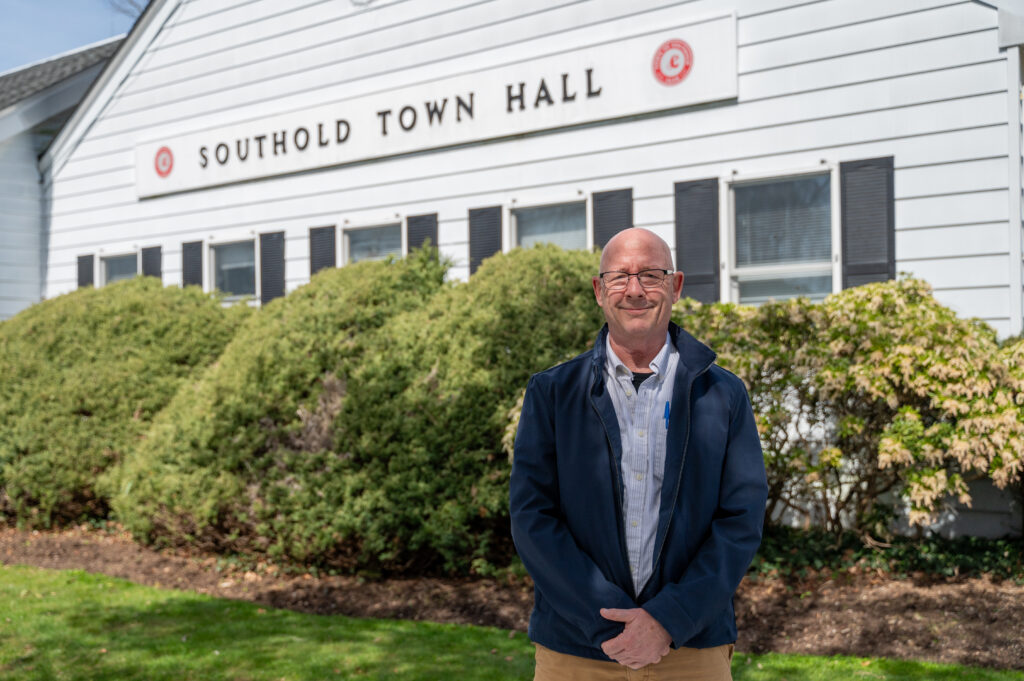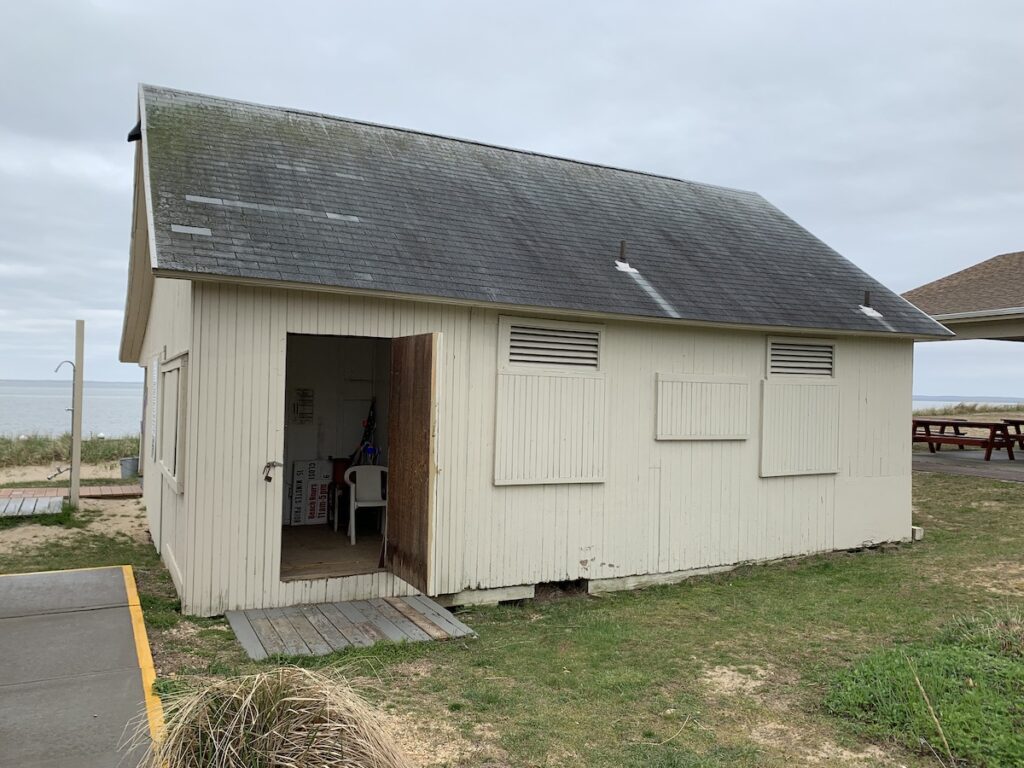Artist haven ‘High House’ is now on historic registry

Growing up, Wendy Prellwitz, her brother and her parents spent summers with her grandparents, Edwin and Eunice Prellwitz, at their summer home: High House, overlooking Little Peconic Bay in Peconic.
She and her brother were the second of three generations of Prellwitz children who spent their summers swimming, fishing and sailing in the bay before tuckering out on the topmost of three stories in the two-centuries-old structure owned by their ancestors.
“This became a place where the family gathered,” Ms. Prellwitz said. “My dad would come out and spend summers with his grandparents, my great-grandparents.”
Her great-grandparents, artists Edith Mitchill Prellwitz and Henry Prellwitz, revered 20th-century painters based on the North Fork and New York City, were known for their three-story waterfront home and adjacent custom-built art studio, a vestigial fixture of the Peconic Art Colony. Last Tuesday, the Southold Town Board voted to add High House, a Dutch colonial home originally built in Aquebogue in 1812, and the studio to the town’s registry of historic landmarks.
“I consider this a trifecta,” Mariella Ostroski, chairperson of the town’s Historic Preservation Commission, said at a public hearing just minutes before the Town Board’s vote. “This particular property fulfills many elements that make it compatible with landmarking. It is on the [Society for the Preservation of Long Island Antiquities] list, which is an automatic approval. It also speaks to our cultural heritage with regard to art at the Peconic colony … and the other element is the architectural significance of … the buildings on the property. This is just a wonderful opportunity for the town to preserve something that’s really important to our community and our history.”
The Prellwitzes’ history with the Peconic property began when Edith’s father purchased the then-vacant lot on Indian Neck Lane along the bay as an investment, which he bequeathed to her. She and her husband, Henry, purchased High House — then known as High House Josh after Joshua Wells, the man who had it built — around the turn of the 20th century, and relocated it onto the waterfront plot.

“They broke it down into all its pieces, all the columns, cross beams, windows and all that, and put it on a barge and brought it over here, dragged it up the hill and rebuilt it,” Ms. Prellwitz explained. “My great-grandfather was also, I think, like a photographer. There were all these glass plates and he was kind of a documentarian of what was going on … My grandfather helped me, and I found all these plates and it tells the story as to how the house was taken down and moved over.”
For Edith and Henry, both painters, the waterfront provided inspiration. In addition to adding more rooms onto High House, they built a detached art studio as a work space to craft their paintings. That structure, with ceilings nearly two stories high. comprises two equally spacious rooms, each boasting its own north-facing skylight for optimal lighting.
“They each had their own studio,” Ms. Prellwitz said. “My guess would be that [Edith] insisted.”
In her time, Edith fought for more opportunities for women in art, and her impact still resonates today. In her personal life, Ms. Prellwitz said, she delayed marriage to continue her dedication to art and stave off the expected domestic gender roles for women. After marrying Henry, she continued to paint, as well as champion her fellow women pursuing the craft. She was one of the five founders of the National Association of Women Artists, a more-than-a-century-old non-profit organization that supports women across the visual arts spectrum, from canvas to camera.
Like her home and studio, Edith’s art is also being well preserved and celebrated. One of her pieces, an 1888 oil painting dubbed “The Elevated,” is currently on display at The Metropolitan Museum of Art, where it will hang through Oct. 29.
“I went to see it,” Ms. Prellwitz said. “There in the room were [paintings by] Robert Henri [and Childe Hassam] and all I could think was, ‘Oh my god, she’s in the room with the big boys.’ She would have been so happy.
“She railed against the fact that women were not afforded the same status in the art world,” Ms. Prellwitz continued. “It’s [still] hard to find a place to exhibit, hard to find anyone to take you seriously and, of course, it was way worse 100 years ago.”
Ms. Prellwitz said Edith and Henry have been respectively described as an impressionist and a tonalist, but she herself does not attach a label to their works, many of which she still has in High House and their former studios, alongside their brushes, books and other artifacts from the era. She regards them as two classically trained painters with their own visions.
“[Henry] was doing landscapes, he painted outdoors,” she said. “In his later years, he did lots of little sketches, which I think are wonderful. They’re kind of spontaneous, they’ve got a freshness to them. He was also really good at moonlight.
“And [Edith] did a myriad of things,” she continued. “She had a wider range of things she was interested in: portraits, landscapes, symbolism in paintings, where she’d be painting about a myth.”
Over the years, as new generations of grandkids visited High House, they pursued the same outdoor activities along the serene bay. But Ms. Prellwitz was always particularly fascinated with the art studio, then slightly darker, lit only by skylight, and her ancestors’ works.
“I was in total awe,” she said. “It looks like magic … And it is kind of magical, all the same stuff, same paint, same brushes. But they’re creating a whole other whole, a whole three-dimensional scene in two dimensions.”
Ms. Prellwitz built a successful career in the world of architecture. After working for other firms, she co-founded PCA Design alongside David Chilinski in 1982. After retiring a little more than a decade ago, she decided to take over Henry’s portion of the studio and make it her own to get more serious about her lifelong passion for art.
Her first order of business in the studio was opening up the wall overlooking the bay and installing large windows for more light and an invaluable view. Recently, she has taken to pressing prints as well as drawing inspiration from the moonlight reflecting off the bay. In lieu of the T-squares and triangles she used to render commercial properties as an architect, Ms. Prellwitz dips brushes in oils to paint the world around her not only as she sees it, but as she feels it.
“It’s not so much that I see this when I go under the water, but [it’s] what being in that glowing water feels like,” she said, referring to some of the moonlight-inspired works hanging inside her studio. “I just had this idea that I wanted to paint the feeling of being enveloped by the glow of water. I wanted to paint the feeling of being very close to a moonlight path. So it really is a bit more of a feeling that I’m going for versus the image.”
This summer, Ms. Prellwitz invited other painters and master printmakers to teach her and other artists about their crafts, just as members of the Peconic Art Colony may have in another century.
“One of my goals is to share this place with other artists,” she explained. “I don’t really know how I’m going to do that, but it’s started by hosting … painting workshops and printmaking [workshops].
“It’s too wonderful for just one person,” she continued, referring to the waterfront studio. “It just feels like the kind of place that should be shared.”
Next summer, Ms. Prellwitz hopes to uphold another cornerstone of her family’s legacy, both more personal, and more relatable. The family’s third professional painter is also its fourth grandmother watching over High House. She hopes her grandchildren — 6-year-old triplets who reside in Florida — will someday enjoy summers on Little Peconic Bay just as she and three other generations have over the past century.
“That kind of happened every summer, the grandkids come out and stay with the grandparents,” she said. “So I’m kind of waiting for that to happen with my grandkids.”








